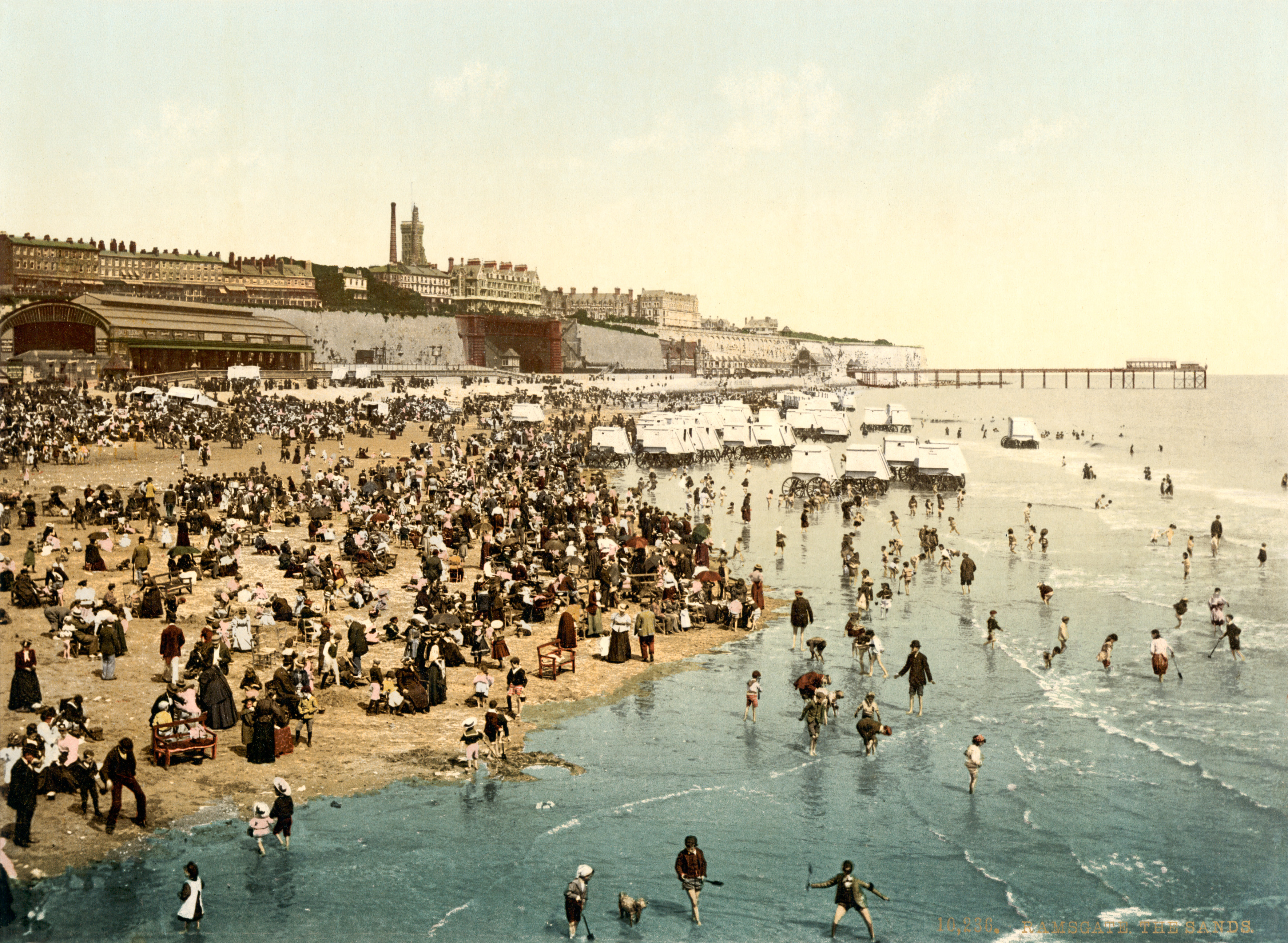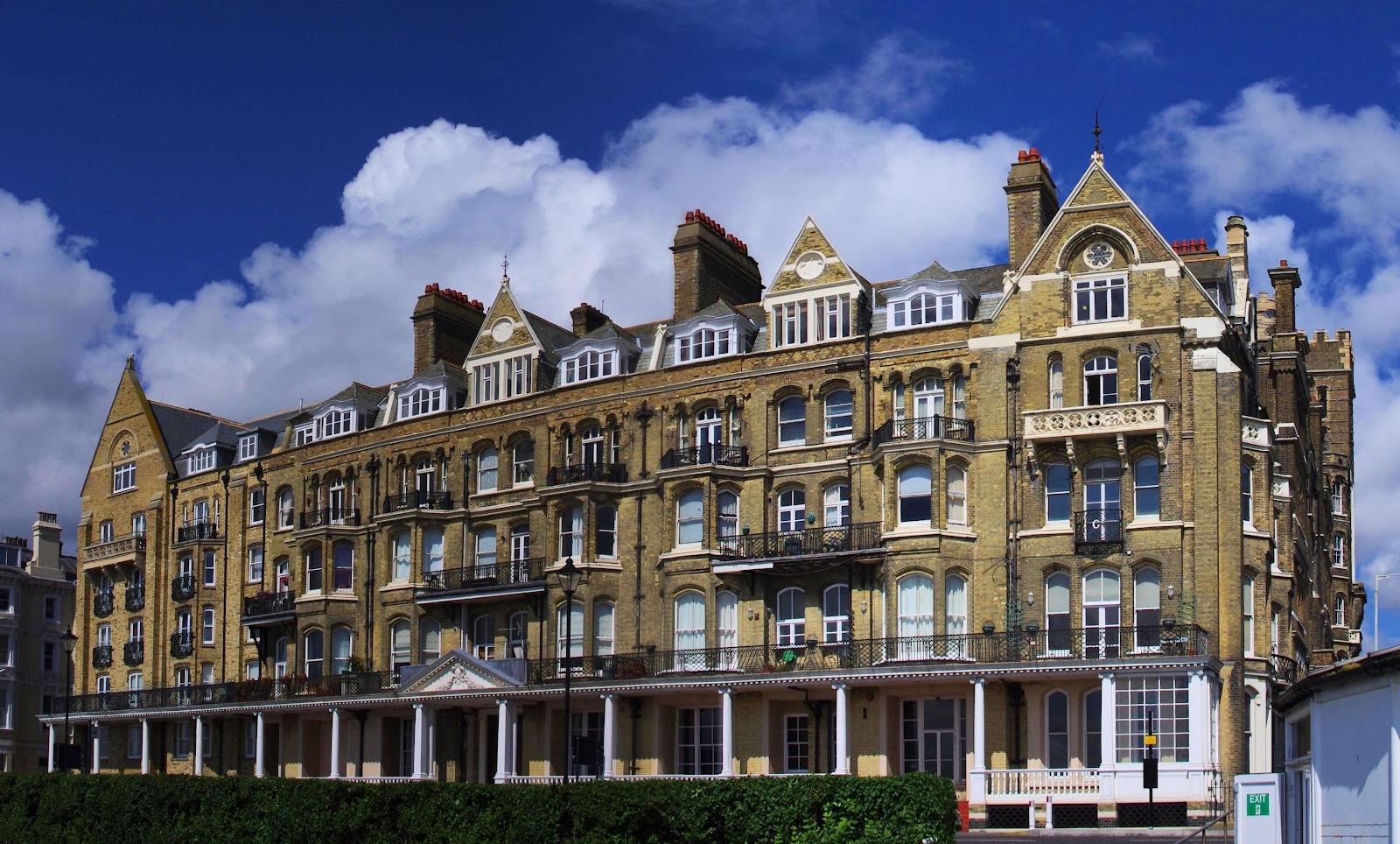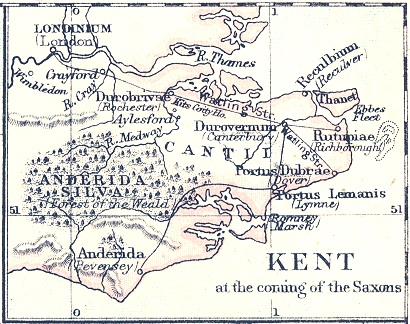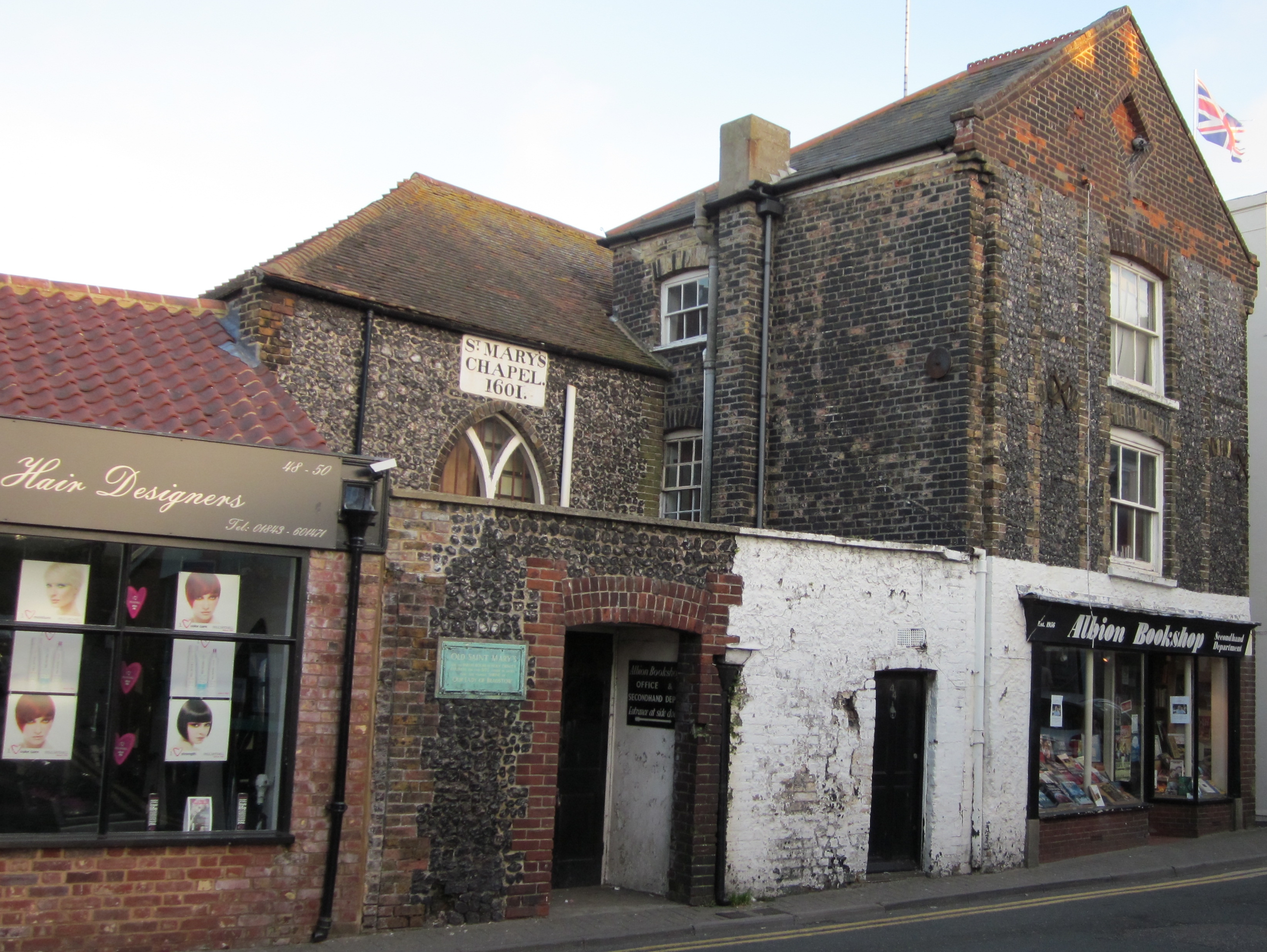|
Ramsgate
Ramsgate is a seaside town in the district of Thanet in east Kent, England. It was one of the great English seaside towns of the 19th century. In 2001 it had a population of about 40,000. In 2011, according to the Census, there was a population of 40,408. Ramsgate's main attraction is its coastline, and its main industries are tourism and fishing. The town has one of the largest marinas on the English south coast, and the Port of Ramsgate provided cross- channel ferries for many years. History Ramsgate began as a fishing and farming hamlet. The Christian missionary St Augustine, sent by Pope Gregory the Great, landed near Ramsgate in 597AD. The town is home to the Shrine of St Augustine. The earliest reference to the town is in the Kent Hundred Rolls of 1274–5, both as ''Remmesgate'' (in the local personal name of ‘Christina de Remmesgate’) and ''Remisgat'' (with reference to the town). The names ''Ramisgate'' and ''Raunsgate'' appear in the parish of St. Laure ... [...More Info...] [...Related Items...] OR: [Wikipedia] [Google] [Baidu] |
Port Of Ramsgate
The Port of Ramsgate (also known as Port Ramsgate, Ramsgate Harbour, and Royal Harbour, Ramsgate) is a harbour situated in Ramsgate, south-east England, serving cross-Channel freight traffic and smaller working and pleasure craft. It is owned and operated by Thanet District Council. History The construction of Ramsgate Harbour began in 1749 and was completed in about 1850. The two most influential architects of the harbour were father and son John Shaw and John Shaw Jr, who designed the clockhouse, the obelisk, the lighthouse and the Jacob's Ladder steps. The harbour has the unique distinction of being the only harbour in the United Kingdom awarded the right to call itself a Royal Harbour. This was bestowed by King George IV after he was taken by the hospitality shown by the people of Ramsgate when he used the harbour to depart and return with the Royal Yacht Squadron in 1821. Because of its proximity to mainland Europe, Ramsgate was a chief embarkation point both during t ... [...More Info...] [...Related Items...] OR: [Wikipedia] [Google] [Baidu] |
Pugin's Church And Shrine Of St Augustine
St Augustine's Church or the Shrine of St Augustine of Canterbury is a Roman Catholic church in Ramsgate, Kent. It was the personal church of Augustus Pugin, the renowned nineteenth century architect, designer, and reformer. The church is an example of Pugin's design ideas, and forms a central part of Pugin's collection of buildings in Ramsgate. Having built his home (The Grange, Ramsgate, next door), Pugin began work on St Augustine's in 1846 and worked on it until his death in 1852. His sons completed many of the designs. This is the site where Pugin is buried, in a vault beneath the chantry chapel he designed, alongside several members of his family. History St Augustine brought Christianity to the English for the first time in AD 597, landing very close to the site of St Augustine's. After his death (c.604), his tomb soon became a shrine. This shrine, which was enlarged and moved over the centuries, was destroyed under the orders of King Henry VIII and Thomas Cromwell in ... [...More Info...] [...Related Items...] OR: [Wikipedia] [Google] [Baidu] |
Ramsgate Sands
''Ramsgate Sands'', also known as ''Life at the Seaside'', is an oil-on-canvas painting by William Powell Frith, made from 1851 to 1854, which depicts a beach scene in Ramsgate. The painting was Frith's first great commercial success: it was exhibited at the Royal Academy summer exhibition in 1854, and bought by Queen Victoria. Frith made a series of similar pictures, showing groups of people in contemporary scenes, including ''The Derby Day'' of 1858, ''The Railway Station'' of 1862, and '' Private View at the Royal Academy'' of 1883. Background After the South Eastern Railway reached Ramsgate Town railway station in 1846, the town of Ramsgate rapidly became a popular destination for day trips from London. Frith was already a successful artist. He became a member of the Royal Academy in 1853, and the painting was based on studies made by Frith during a holiday in Ramsgate in September 1851, where he was inspired by the variety of everyday life. Dunedin Public Art Gallery h ... [...More Info...] [...Related Items...] OR: [Wikipedia] [Google] [Baidu] |
A W Pugin
Augustus Welby Northmore Pugin ( ; 1 March 181214 September 1852) was an English architect, designer, artist and critic with French and, ultimately, Swiss origins. He is principally remembered for his pioneering role in the Gothic Revival style of architecture. His work culminated in designing the interior of the Palace of Westminster in Westminster, London, England, and its iconic clock tower, later renamed the Elizabeth Tower, which houses the bell known as Big Ben. Pugin designed many churches in England, and some in Ireland and Australia. He was the son of Auguste Pugin, and the father of Edward Welby Pugin and Peter Paul Pugin, who continued his architectural firm as Pugin & Pugin. He also created Alton Castle in Alton, Staffordshire. Biography Pugin was the son of the French draughtsman Auguste Pugin, who had immigrated to England as a result of the French Revolution and had married Catherine Welby of the Welby family of Denton, Lincolnshire, England. Pugin was b ... [...More Info...] [...Related Items...] OR: [Wikipedia] [Google] [Baidu] |
The Granville Hotel, Ramsgate
The Granville Hotel, Ramsgate, Kent, on the southeast coast of England, was a former hotel designed by Edward Welby Pugin, son of Augustus Pugin. The Granville was a hotel between 1869 and 1946 before being sold by proprietors Spiers & Pond. The building is now Granville House, a private residence containing 48 self-contained flats that are managed by Cockett Henderson. Granville House was Grade II listed on 16 October 1973. In 2010 the lease holders of Granville House gained the Right To Manage and are now responsible for looking after the building themselves. On 18 December 2012, at a public auction, the freehold of Granville House was purchased by Mr Eliasz Englander for £156,000. The Granville Cinema opposite, is named after the building. History After the death of Augusta Emma d'Este (Lady Truro) on 21 May 1866, the remainder of the land from the Mount Albion Estate was sold off to developers. Business partners, Robert Sankey, John Barnet Hodgson and Edward Welby ... [...More Info...] [...Related Items...] OR: [Wikipedia] [Google] [Baidu] |
St Augustine's Abbey Ramsgate
St Augustine's Abbey or Ramsgate Abbey is a former Benedictine abbey in Ramsgate. It was built in 1860 by Augustus Pugin and is a Grade II listed building. It was the first Benedictine monastery to be built in England since the Reformation. In 2010, the monks moved to St Augustine's Abbey in Chilworth, Surrey. The site is now owned by the Vincentian Congregation from Kerala, India. The church of St Augustine, across the road from the abbey site, belongs to the Archdiocese of Southwark and is a shrine of St Augustine of Canterbury. History Augustus Pugin had built his home, The Grange, in Ramsgate, and St Augustine's Church next door. He donated the church to the Catholic Diocese of Southwark before his death in 1852, and The Grange remained in private hands. In 1856, the Bishop of Southwark, Thomas Grant, invited the Subiaco Cassinese Congregation of the Benedictines to form a monastic community in Kent and take over the running of the church. The abbey was built across t ... [...More Info...] [...Related Items...] OR: [Wikipedia] [Google] [Baidu] |
The Grange, Ramsgate
The Grange , Ramsgate, Kent, on the coast of southern England was designed by the Victorian architect and designer Augustus Pugin for himself. Built between 1843 and 1844, in the Gothic Revival style, Pugin intended it both as a home and as a manifesto for his architectural philosophy. Rescued from demolition by the Landmark Trust in 1997, the Grange is a Grade I listed building. History Pugin bought the land for the site at West Cliff, Ramsgate, in 1841. The house was built between 1843 and 1844 by the builder George Myers. Pugin's second wife died in 1844 and it was only after his third marriage to Jane Knill in 1848 that it became a family home. The interior of the house was finally completed in 1850. It is built from the inside out in the sense that the layout of the rooms was considered before the outside of the building. This is in contrast to the Georgian style that preceded it. The style was influential on subsequent English architecture designed by architects like Edwin ... [...More Info...] [...Related Items...] OR: [Wikipedia] [Google] [Baidu] |
Thanet District
Thanet is a local government district in Kent, England. Formed under the Local Government Act 1972, it came into being on 1 April 1974 and is governed by Thanet District Council. On the north eastern tip of Kent, it is predominantly coastal, with north, east and southeast facing coastlines, and is bordered by the City of Canterbury district to the west and the Dover district to the south. The main towns are Margate, Ramsgate and Broadstairs. History The Isle of Thanet is the major part of the district. Formed over 7,000 years ago and separated from the mainland by the Wantsum Channel, it has always borne the brunt of invasions from the Continent. An Isle of Thanet Rural District had existed from the Local Government Act 1894 until it was abolished in 1935 to form part of Eastry Rural District. The current District was formed in 1974, by the addition of the area over which was once the Wantsum Channel, including the settlement of Sarre. Governance The District Council ... [...More Info...] [...Related Items...] OR: [Wikipedia] [Google] [Baidu] |
Isle Of Thanet
The Isle of Thanet () is a peninsula forming the easternmost part of Kent, England. While in the past it was separated from the mainland by the Wantsum Channel, it is no longer an island. Archaeological remains testify to its settlement in ancient times. Today, it is a tourist destination, and has an active agricultural base. Etymology The island of Thanet is mentioned as ''Tonetic'' (c. AD 150; the TON- of this form was misread as TOΛI-, hence it appears as ''Toliatis'' in the surviving manuscripts of Ptolemy); ''Tanat's'' (3rd C AD, Solinus); ''Tanatos'' (AD 731); ''Tenid'' in 679BEAUREPAIRE and ''Tenet'' (e.g. charters of AD 679, 689 and thereafter); and the Old Welsh forms ''Tanet'' and ''Danet'', found in the ''Historia Brittonum'' (c. AD 829/30) and Armes Prydein (c. AD 930). Standard reference works for English place-names (such as Eilert Ekwall's ''Concise Oxford Dictionary of English Place-Names'') state the name ''Tanet'' is known to be Brythonic in origin. Commonl ... [...More Info...] [...Related Items...] OR: [Wikipedia] [Google] [Baidu] |
Janet Stancomb-Wills
Dame Janet Stancomb Graham Stancomb-Wills, DBE (25 January 1854 – 22 August 1932) was the first woman mayor of Ramsgate in Kent, an office which she held from 1923–24, and she was also the first person to receive, in 1922, the Freedom of the Town. She was elected President of the Royal West of England Academy (RWA) in 1911, decades before any other British Academy even admitted women as full members, and also became President of the School of Architecture at Bristol in 1921. In 1927, she was appointed Justice of the Peace for Kent. She died on 22 August 1932 at East Cour(Historic England listing) Ramsgate, Kent, aged 78. Biography Born Janet Stancomb Graham Stancomb, she was the elder daughter of George Perkins and Catherine Janet (née Lobb) Stancomb, of Aldersgate, London, and niece of the first Baron Winterstoke (Sir W. H. Wills). With the early deaths of her father, and older brother, she and her sister, Yda Emily Margaretha Stancomb (31 January 1856 – 22 September 19 ... [...More Info...] [...Related Items...] OR: [Wikipedia] [Google] [Baidu] |
Broadstairs
Broadstairs is a coastal town on the Isle of Thanet in the Thanet district of east Kent, England, about east of London. It is part of the civil parish of Broadstairs and St Peter's, which includes St Peter's, and had a population in 2011 of about 25,000. Situated between Margate and Ramsgate, Broadstairs is one of Thanet's seaside resorts, known as the "jewel in Thanet's crown". The town's coat of arms's Latin motto is ''Stella Maris'' (" Star of the Sea"). The name derives from a former flight of steps in the chalk cliff, which led from the sands up to the 11th-century shrine of St Mary on the cliff's summit. The town spreads from Haine Road in the west to Kingsgate (named after the landing of King Charles II in 1683), a hamlet in St Peter parish in the north, and to Dumpton in the south (named after the yeoman Dudeman who farmed there in the 13th century). The hamlet of Reading (formerly ''Reden'' or ''Redyng'') Street was established by Flemish refugees in the 17th ce ... [...More Info...] [...Related Items...] OR: [Wikipedia] [Google] [Baidu] |
Manston, Kent
Manston is a village and civil parish in the Thanet district of Kent, England. The village is situated one mile northwest of Ramsgate. The parish includes four hamlets and the former Manston Airport. Etymology The village was originally ''Mannestone'' which means 'farm on top of a hill' (a possible alternative variation is a farm belonging to a man called Mann) and was recorded in 1254 as ''Manneston'', but obtained its modern spelling in 1381 around the time of the Peasants' Revolt. History The discovery of an Anglo-Saxon sword at what is known as the Ozengell burial ground and also 200 graves including a Roman stone and lead-lined coffin, never preserved, show that the site has been occupied for many centuries. In June 1381 the Peasants' Revolt reached Manston. :''"A proclamation in the name of Jack Straw and Wat Tyler ordered that labour services should not be performed nor distraints made, and called on the people to destroy the Manston house of William dea Medmenham l ... [...More Info...] [...Related Items...] OR: [Wikipedia] [Google] [Baidu] |







